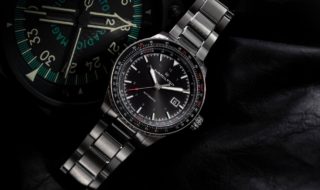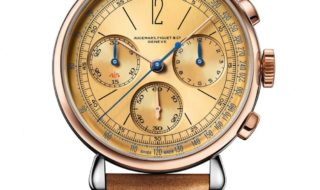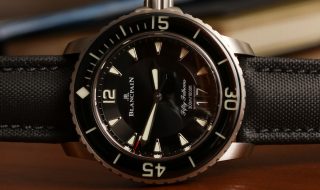Where To Buy Movement – So what is a module, exactly? Replica Clearance
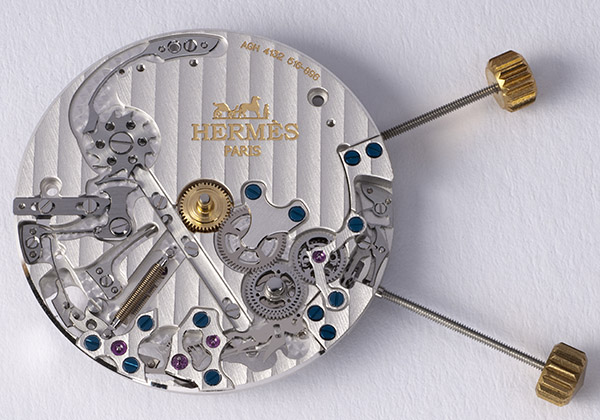
When reading spec sheets, we sometimes come across the ambiguous term “module”. It’s a rather vague and imprecise word, which can have any number of meanings. It can refer to the shape of a cigar, a space ship or, in the present context – watchmaking – a complication plate. Clear as mud? Thought so. Let’s have a little chat about movements.
A movement is like a wedding cake. It can have several layers. As a minimum, it supplies the basic functions required of a watch engine. It will count the hours and the minutes and, even if it doesn’t necessarily display them, the seconds. To achieve this, it relies on several organs working together as a system: an energy source (the barrel), a system for measuring time (balance / balance spring and escapement), a transmission (the gears) and an interface with the wearer (the display). This is what is generally known as a base movement, sometimes referred to as a “tractor”.

The alarm / countdown module of the Slim d’Hermès Heure Impatiente © Eveline Perroud
However, a calibre can also offer any number of additional indications. A quick back-of-the-envelope calculation brings us to well over a hundred complications and combinations thereof. How are they supplied? There are two approaches. The first is to start off with the base movement, and on top of that, graft a separate bloc that deals with one or more additional functions. This is the module. It’s called a complication plate because it is in the shape of a circular plaque. But it’s not autonomous. It borrows its energy and timekeeping functions from the base movement, which carries and supplies it (hence the term “tractor”).
The advantage of a module is that it can be made separately and grafted onto different movements. It’s also far simpler than a base calibre, which makes it relatively economical to produce. It enhances calibres with useful functions such as additional time zones, big dates, power reserves and moon phase displays. It is indispensable when it comes to exotic displays such as wandering hours and retrograde functions. The disadvantage is that it is superimposed on top of the base movement, and any protrusions have to project at a different level. To give a typical example, in a chronograph module (from Audemars Piguet or Girard-Perregaux), the pushers are not on the same plane as the crown. Even worse, the date, which is often part of the base movement, looks like it’s at the bottom of a well.
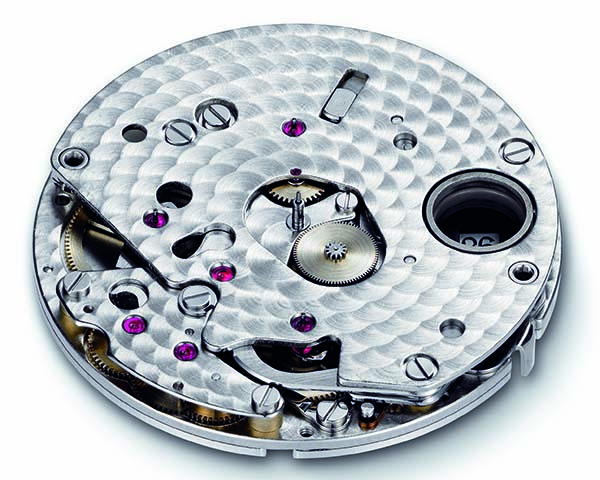
A chronograph with modular construction © Audemars Piguet
A special feature of Caliber L921, also called the Sax-0-Mat, is a zero-reset function for the seconds — thus the “0” at “Sax-0-Mat.” The tiny seconds hand automatically returns to the zero position once the crown is pulled out, for to-the-second period setting. “Sax-0-Mat” seems on the Cable and dial. The balance oscillates at 21,600 vph. The caliber, that was hand-wound, 30.6 mm in diameter and 7.5 mm thick, was four years in evolution, and included a flyback function.Its unconventional characteristics include another bridge to the fourth wheel, a chronograph operating lever mounted between 2 bearings, an adjustable coupling lever positioned in the center of the fourth wheel, plus a minute-counter-operating lever mounted involving stones. There’s also a stepped pinion for true minute-counter advances, an escape wheel with four jewels, a large Glucydur screw balance along with a Breguet balance spring. The balance oscillates in the classic frequency of 18,000 vph. The caliber additionally supports Lange’s recognizable outsize date, to which the prefix “Dato” alludes.
An alternative approach is an integrated movement. All the complications interact under the same roof, on a single plate, within a single unified whole. This construction is aesthetically more elegant, and it has a valuable functional advantage in that it is far thinner. Indeed, an integrated construction can incorporate functions in the lateral rather than the vertical plane. This is the case with Oris’s calibre 113, which includes a day, date, month and week number within a movement the same height as the calibre 110.
There is a third, rarer and more exclusive approach. A semi-integrated construction involves grafting organs onto a base movement. Rather than having their own plate, which adds precious millimetres to the height, these complications are inserted into voids created in an existing movement. This approach shaves off millimetres, but adds significant complexity. It is nevertheless the only approach that gets around the problem of developing an entirely new movement for each combination of complications. This is why Patek Philippe and A. Lange & Söhne adopt this approach for their grand complications.
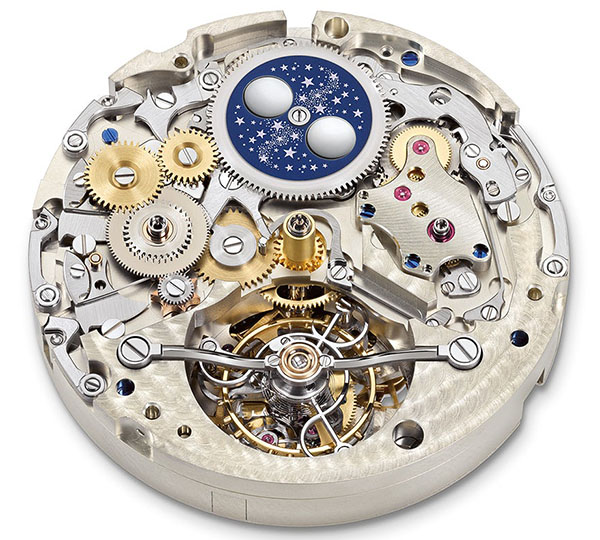
The constant force split-seconds perpetual calendar tourbillon calibre of A. Lange & Söhne’s Tourbograph “Pour le Mérite” is semi-integrated © A. Lange & Söhne



